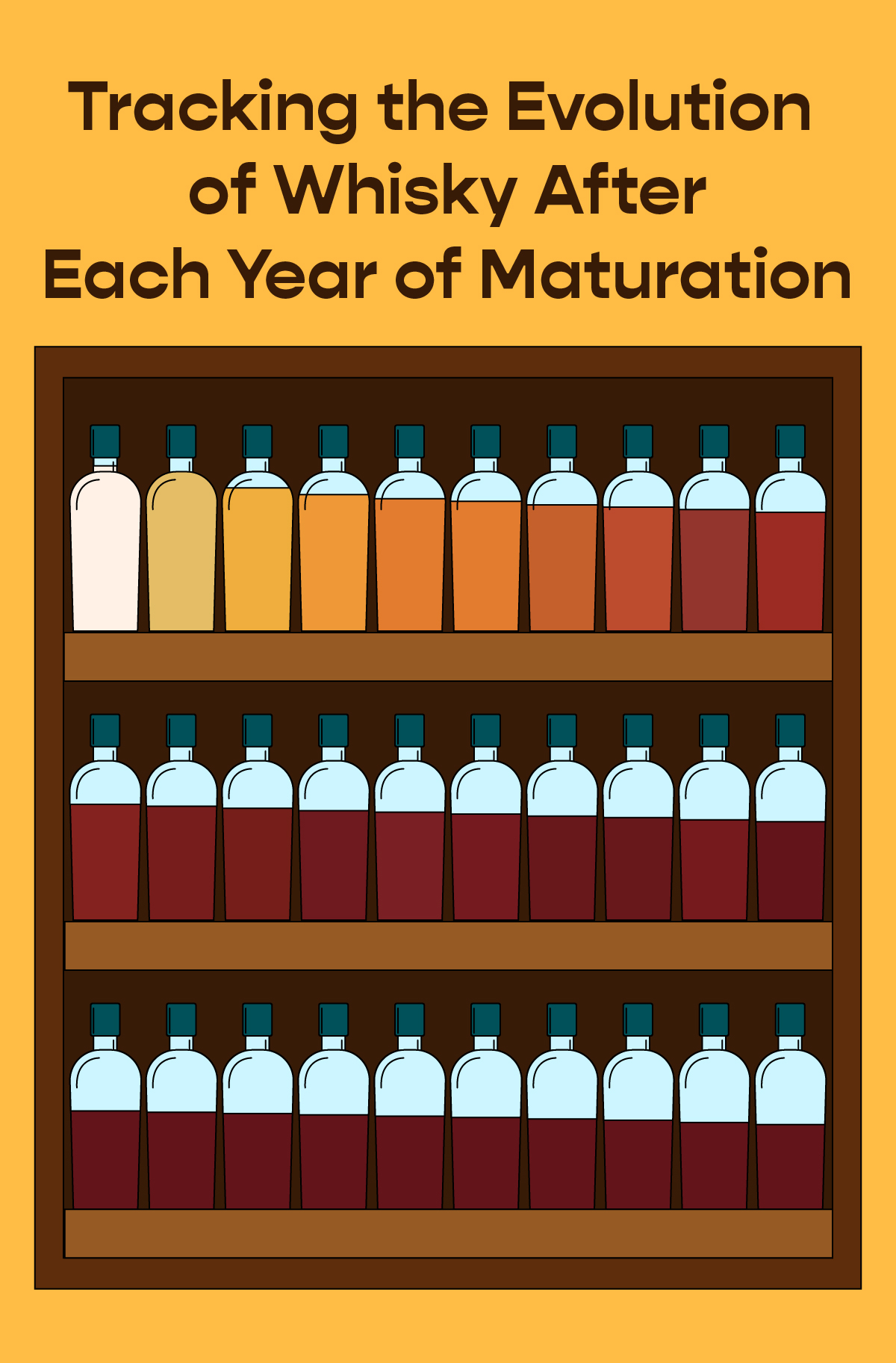It’s no secret that whiskey improves and evolves with time in-barrel.
After distillation, the spirit enters the cask as a colorless spirit. It gains toasted wood flavors and tannins from the barrel as it ages. Casks also add color, which deepens over time as oak and whiskey spend longer periods in contact.
Beyond influencing profile and color, barrel aging impacts the spirit in other ways, most notably evaporation. Known as the “angel’s share,” a certain percentage of whiskey evaporates from the barrel each year. Several factors can determine the total amount of angel’s share, including barrel size, climate, and geographical location. In fairly mild Scotland, some 1 to 2 percent of Scotch evaporates each year, while whiskey aging in India might lose 10 to 15 percent.
All of the above is outlined in the infographic below, which illustrates the physical changes that the spirit generally undergoes during the barrel-aging process. Each new bottle represents one extra year of aging — hence the color change and lowering volume over time.
Follow the journey of a bottle of whiskey through the years.


